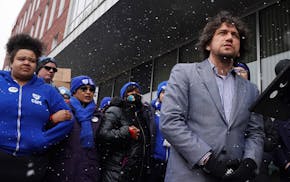Even for our violent time ofhistory, this month has brought a remarkable succession of incidents ofinter-religious violence in our country.For the moment, I want to name just three: the thwarted attack on two New York synagogues by fournominal Muslims (May 21st), the much-reported aggressive rhetoric ofRabbi Manis Friedman in Moment magazine (June 3rd), and last week'sattack on the Holocaust Museum in Washington, D.C. by a white supremacist (June 11th).
In each case the news mediareported on the violent episode.My son the journalism student reminds me that professional journalistsgenerally do their work with honed sophistication and good intentions. Yet they are part of a system in whichviolence is defined as compelling news, while the peaceful exchanges followingthe act of violence generally go uncovered. (As one Muslim colleague puts it, no one would write a storywith the title, "Muslim Performs Act of Kindness.")
Here is the untold story of theselast three incidents. After thethwarted attack on the synagogues in New York, after the revelation of RabbiFriedman's unfortunate comments about treatment of Palestinians, and after themurder of a security guard at the U.S. Holocaust Memorial Museum, multipleJewish, Christian and Muslim organizations issued public expressions of concernand condemnation for acts of hate committed in the name of their own community.These statements rarely get quite the level of press attention given to theoutrageous act that occasioned them, but with the Internet, the statements areavailable for those who care to know.
Beneath the level of publicorganizational press releases lies a less known but perhaps deeper web ofinterpersonal relationships among religious leaders of different communities. I know this because my work has openedme to relationships of caring and respect with many Christian and Muslimleaders. When a physical orsymbolic attack on the Jewish community is committed, I receive moving e-mailsfrom colleagues and friends, saying the news made them think of me, expressingtheir empathy and sorrow for me and other Jews, and offering prayers for aredeemed world. Likewise, when itwas one of my own whose printed words appeared to offend norms of respect forthe other, I went into high gear, to assure my friends of my own horror at whathad been said in the name of the religion I treasure.
This is probably not a newphenomenon: I suspect this has been going on for a long time, and I am justbecoming more deeply aware of it because my own inter-religious relationshipsare maturing. But something important is going on here. When inter-group enmity is expressed inthe public square, there is a steady, reliable, and deeply felt exchange of caringand concern between friends and colleagues across religious boundaries. When my people is attacked, my friendsreach out to find out if my loved ones and I are OK, expressing concern for thetrauma my community has suffered.And when another people is attacked, I reach out in a similar way,because we care about one another, and we are pained when the fabric ofhumanity is torn yet again by an act of enmity.
This is a story of the simple yetprofound reality of inter-religious relationship as the answer to hate in theworld. Skeptics may deny themeaningfulness of this phenomenon.But those of us who are privileged to be part of this precious web ofpeace-building relationships know that this is the real story, and that it isplayed out countless times around the globe every day. Someday, when the advocates of dialoguegrow in their numbers and in their passion for this sacred work, we willoverpower the forces of hate. Andwe will do it one human relationship at a time.

Lakewood Cemetery in Minneapolis opens new Welcome Center
Man killed in domestic incident in Coon Rapids, Sheriff's Office says

U of M's interim president meets with pro-Palestinian protest leaders

Legendary boys hockey coach Randolph loses his job

